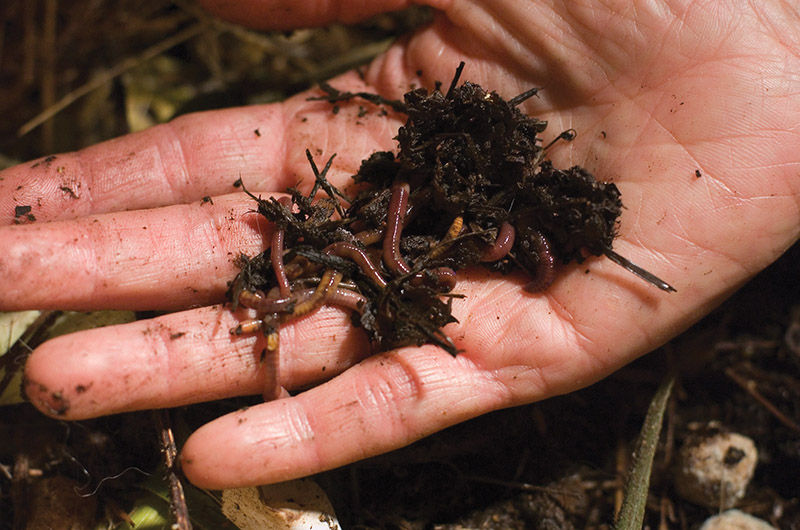Healthy red worms: For natural soil care
Wiki Article
Change Your Yard With Red Wigglers: Tips and Techniques
Red wigglers are not just a curiosity for compost enthusiasts; they are essential agents of change for any yard. By establishing a basic worm bin and recognizing the nutritional requirements of these impressive animals, garden enthusiasts can dramatically boost dirt top quality and plant health and wellness. The process of transforming natural waste into abundant, abundant spreadings is both uncomplicated and fulfilling. The real capacity of red wigglers goes past mere composting. Exploring the nuances of their care and the diverse applications of their by-products can open even better benefits for your horticulture ventures.
Benefits of Red Wigglers
Red wigglers, clinically known as Eisenia fetida, are commonly hailed as nature's composting champions. These impressive worms serve numerous key advantages that can significantly boost yard health and wellness and performance.
Another noteworthy benefit of red wigglers is their capability to minimize waste. By composting organic products that would otherwise add to garbage dump waste, they play an important duty in sustainable horticulture methods. Lastly, integrating these worms into your horticulture regimen can result in increased yields, healthier plants, and an extra vivid garden atmosphere, making them indispensable allies for gardeners seeking to boost their environmental footprint.
Setting Up a Worm Container
Producing a worm container is a vital action for anybody aiming to harness the benefits of red wigglers in their horticulture initiatives. A suitable worm container can be made from various materials, including plastic containers, wooden cages, or readily offered worm containers. The initial factor to consider is dimension; a bin that goes to least 2 feet wide, 3 feet long, and 1 foot deep is typically optimal for a little to tool variety of worms.Following, ensure appropriate drain and air flow. Drill openings in all-time low for excess moisture to escape and in the sides for airflow. It is very important to develop a bedding layer, making use of materials such as shredded newspaper, cardboard, or coconut coir to offer a comfortable setting for the worms. The bed linens needs to be wet but not soggy, resembling a moist sponge.
Place the bin in a location that keeps a regular temperature, preferably in between 55 ° F and 77 ° F. Avoid straight sunshine or severe cold, as these problems can harm the worms. Once the container is set up, allow the bed linens to clear up for a few days prior to presenting the red wigglers, ensuring they have a flourishing setting in which to flourish.
Feeding Your Red Wigglers
As soon as the worm bin is established and the red wigglers are introduced, proper feeding comes to be crucial to keeping a healthy worm populace. Red wigglers flourish on a diverse diet plan, mostly consisting of kitchen scraps and natural products.When introducing food, slice the scraps into smaller items to facilitate quicker intake. In addition, hide the food below a layer of bedding product to avoid fruit flies and other annoyances. Screen the feeding frequency; a general regulation is to give food every 1-2 weeks, depending upon the variety of worms and the amount of food waste created.

Gathering Worm Spreadings
Exactly how can you like it inform when it's time to harvest worm castings from your container? The preparedness of worm castings is indicated by a couple of essential indications. The product in the container should show up dark, crunchy, and abundant in texture, looking like a great soil. In addition, the original food scraps must be substantially broken down or virtually unrecognizable, showing that the worms have properly processed them.One more indication is the reduction in worm task; as the spreadings gather, worms have a tendency to move in the direction of fresher food sources. If you see a decline in worm activity and the visibility of spreadings at the end of the container, it's a clear signal that harvesting schedules.
To gather, carefully dig the spreadings, taking care to lessen disturbance to the worms. A prominent method entails dividing the castings utilizing light; worms have a tendency to delve away from the light, allowing you to accumulate the castings more quickly.
Gathering consistently, about every three to six months, ensures a constant supply of this nutrient-rich amendment for your gardening undertakings. Bear in mind, the high quality of your castings directly impacts the health and wellness of your plants.
Making Use Of Castings in Your Garden
(red worms)Making use of worm castings in your yard can substantially improve dirt health and wellness and plant growth - red worms. These nutrient-rich natural plant foods supply necessary macro and trace elements, boosting the general fertility of your soil. By incorporating worm spreadings right into your garden beds, you can advertise valuable microbial activity, which aids in nutrient accessibility and improves dirt structureTo make use of worm spreadings successfully, mix them into the leading few inches of dirt prior to growing. You can develop a nutrient-dense liquid plant food by steeping worm spreadings in water for a week, after that applying the resulting "worm tea" straight to your plants.
Worm castings likewise improve wetness retention within the soil, reducing the demand for frequent watering. Regularly incorporating worm castings right into your gardening regimen can lead to robust plant growth, boosted yields, and a general healthier yard ecosystem.
Verdict
Incorporating red wigglers right into yard methods offers significant benefits, consisting of boosted soil fertility and improved plant health and wellness. By developing a worm bin, offering ideal food, and on a regular basis collecting nutrient-rich spreadings, gardeners can foster a sustainable ecosystem. The usage of worm spreadings and "worm tea" further adds to moisture retention and nutrient availability in the soil. Eventually, the combination of red wigglers helps with an effective and eco-friendly technique to horticulture, promoting general ecological equilibrium.Report this wiki page